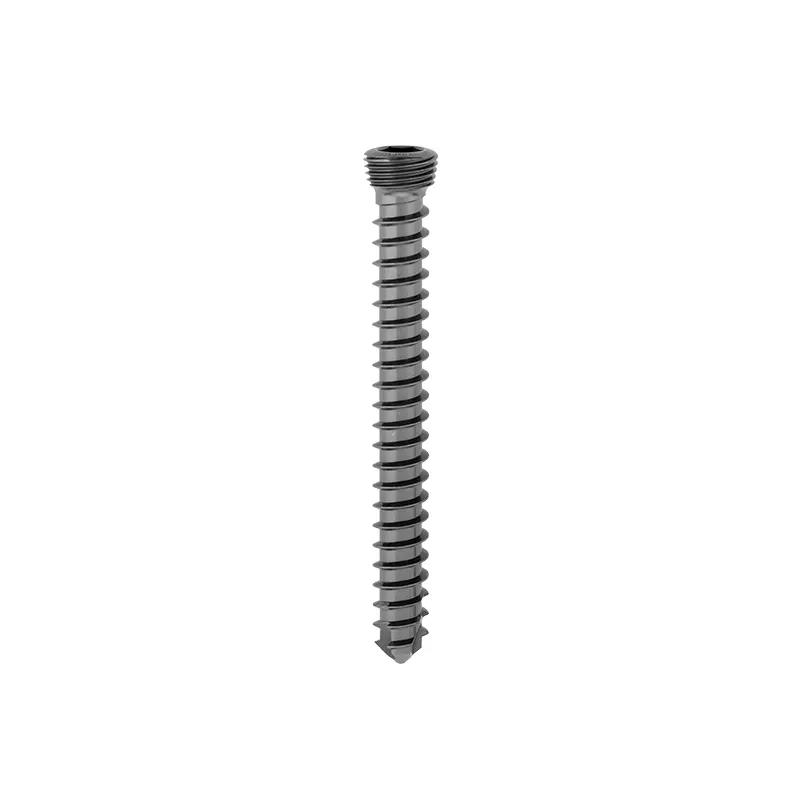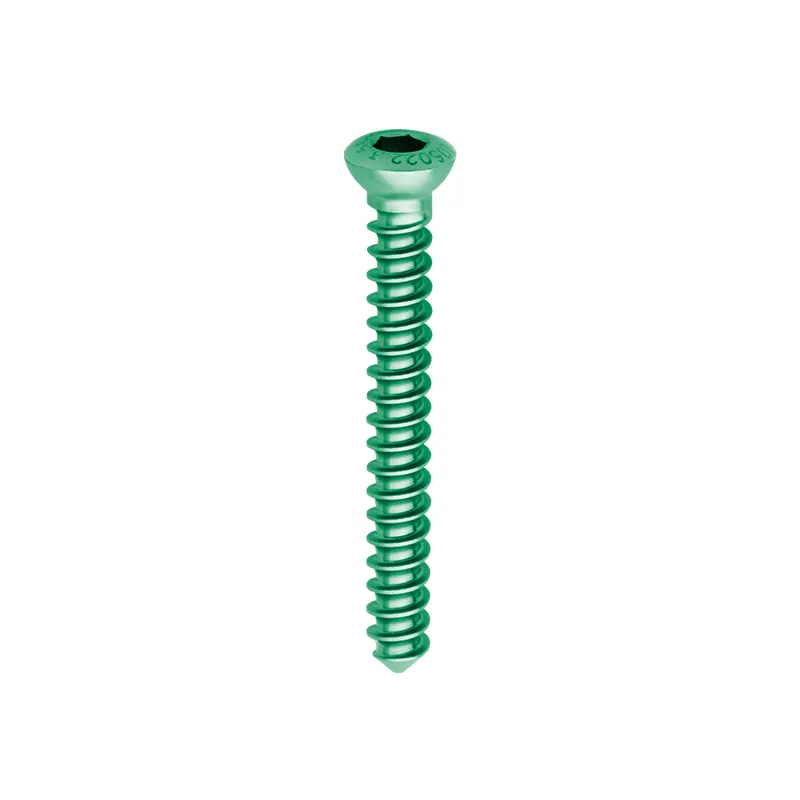Enhancing Orthopedic Outcomes with Precision Fixation
In orthopedic surgery, internal fixation plays a critical role in restoring the integrity and functionality of fractured bones. One of the most relied-upon devices in this domain is the bone screw. Designed to deliver stability and support to complex fractures, the bone screw has evolved into a precision instrument that allows surgeons to achieve accurate alignment and secure bone healing. It serves not only as a mechanical anchor but also as a strategic tool to optimize recovery in challenging fracture scenarios.
Biomechanical Role of Bone Screws
Load Distribution and Structural Support
Bone screws provide crucial load-sharing capabilities in orthopedic procedures. When inserted properly, a bone screw distributes mechanical stress across the fractured bone and implant construct. This redistribution of forces prevents overloading at the fracture site, which could otherwise delay healing or lead to implant failure. Especially in multi-fragmented or unstable fractures, the bone screw ensures that each segment is securely held in position, promoting early mobilization and functional recovery.
Anchoring Capabilities in Osteosynthesis
The primary mechanical function of a bone screw is to act as an anchor within the bone structure. Once fixed, it grips the cortical or cancellous bone depending on the screw design, offering resistance against displacement. This anchoring capability is essential for stabilizing bone fragments, particularly in long bones such as the femur, tibia, or humerus. Whether used alone or in conjunction with plates, rods, or external fixators, bone screws enable the rigid fixation needed for effective osteosynthesis.
Adaptability in Complex Fracture Types
Fixation in Comminuted and Segmental Fractures
Complex fractures often involve multiple fragments or irregular break patterns. Bone screws are ideal in these scenarios due to their versatility and compatibility with various fixation systems. In comminuted fractures, they help reassemble the fragmented bone, holding each piece securely. Segmental fractures, which involve separate segments of bone, also benefit from screw fixation to maintain proper anatomical alignment and promote biological healing.
Application in Intra-Articular and Periarticular Injuries
Bone screws are commonly used in fractures involving joint surfaces or regions near joints. These areas demand high precision and stable fixation to restore joint congruity and function. In intra-articular fractures, for instance, lag screws are used to compress the fracture line and eliminate gaps that could lead to joint degeneration. Similarly, periarticular screws help maintain stability without interfering with joint motion, ensuring both structural and functional recovery.
Material and Design Considerations
Biocompatible and Durable Materials
Modern bone screws are manufactured from advanced materials such as titanium and stainless steel. These materials are chosen for their biocompatibility, strength, and resistance to corrosion. Titanium, in particular, is lightweight and well-tolerated by human tissue, reducing the risk of inflammatory response or allergic reaction. The material properties ensure that the bone screw remains effective over extended periods, even under dynamic physiological loads.
Design Innovation for Specialized Applications
Bone screw designs vary widely to meet the demands of different anatomical regions and fracture patterns. For instance, cannulated screws have a hollow center allowing for guided insertion over a wire, offering precision during minimally invasive procedures. Headless compression screws are often used in small bone applications like scaphoid or foot fractures, where prominence of hardware could affect motion or comfort. Each variation is engineered to meet specific biomechanical and clinical goals.

Surgical Techniques and Screw Placement
Optimizing Trajectory and Insertion Angle
Correct trajectory and insertion angle are vital to the success of bone screw fixation. Surgeons use preoperative imaging and intraoperative navigation to plan the screw path that maximizes bone purchase while avoiding critical structures such as nerves or blood vessels. Misalignment or improper angulation can compromise stability or cause complications. Therefore, precision in placement is a critical component of bone screw effectiveness.
Role in Minimally Invasive Surgery
Bone screws have become increasingly integral to minimally invasive orthopedic techniques. With specialized instrumentation and fluoroscopic guidance, surgeons can place screws through small incisions, reducing soft tissue damage and postoperative pain. These less invasive approaches, when paired with bone screws, often lead to quicker recovery times, shorter hospital stays, and improved patient satisfaction.
Postoperative Stability and Bone Healing
Facilitating Early Mobilization
Stability provided by bone screws enables early movement, which is beneficial for maintaining joint function and preventing muscle atrophy. In weight-bearing bones, stable screw fixation allows for controlled loading during rehabilitation, which can stimulate bone remodeling and enhance healing outcomes. This early mobilization is especially important in elderly patients or those with comorbidities, where prolonged immobility poses significant risks.
Promoting Biological Healing Processes
Mechanical stability is a prerequisite for biological healing. Bone screws minimize micromotion at the fracture site, reducing the formation of fibrous tissue and promoting direct bone healing. Their secure fixation creates an environment conducive to angiogenesis, callus formation, and osteoblast activity—all essential steps in the healing cascade. In some cases, bone screws are coated with bioactive materials to further support osteointegration and accelerate the healing timeline.
Customization for Patient-Specific Needs
Personalized Fixation Strategies
Not all fractures or patients are the same, and bone screws offer a customizable solution tailored to individual clinical needs. Surgeons can select screw length, diameter, thread type, and material based on patient anatomy and bone quality. For example, osteoporotic patients may require screws with larger thread diameters to achieve adequate purchase in fragile bone. This flexibility ensures that fixation strategies are optimized for the best possible outcome.
Integration with Other Implant Systems
Bone screws are often used in combination with other orthopedic implants such as plates, rods, or cages. Their modular compatibility allows for integrated fixation systems that can address complex biomechanical challenges. In spinal surgeries or pelvic reconstructions, multiple screws may be coordinated within an overarching system to stabilize multiple planes of motion. This integrated approach enhances both surgical planning and clinical results.
Technological Advancements and Future Trends
Smart Screw Technologies
Innovation is transforming traditional bone screws into intelligent devices capable of monitoring healing progress. Emerging smart screw systems incorporate embedded sensors that transmit real-time data on load, temperature, or pressure within the fracture site. This data can be used to guide rehabilitation protocols and detect complications early. Though still in developmental stages, these advancements promise a more data-driven approach to fracture management.
Sustainable and Bioabsorbable Materials
There is a growing trend toward using bioabsorbable bone screws made from materials like polylactic acid or magnesium alloys. These screws provide temporary fixation and degrade naturally over time, eliminating the need for hardware removal surgeries. Particularly useful in pediatric cases or in anatomically sensitive regions, bioabsorbable screws align with the broader movement toward sustainability and patient-centered care in orthopedic medicine.
FAQ
What materials are bone screws typically made from?
Bone screws are commonly made from titanium or stainless steel due to their strength, biocompatibility, and resistance to corrosion.
How do bone screws promote bone healing?
Bone screws provide stable fixation, reducing micromotion at the fracture site and creating an environment conducive to natural bone regeneration.
Are bone screws used alone or with other implants?
Bone screws can be used independently or as part of a larger fixation system, such as with plates or rods, depending on the fracture complexity.
Can bone screws be removed after healing?
In many cases, bone screws can remain in the body indefinitely, but they can also be removed if they cause discomfort or if the bone has fully healed.
Table of Contents
- Enhancing Orthopedic Outcomes with Precision Fixation
- Biomechanical Role of Bone Screws
- Adaptability in Complex Fracture Types
- Material and Design Considerations
- Surgical Techniques and Screw Placement
- Postoperative Stability and Bone Healing
- Customization for Patient-Specific Needs
- Technological Advancements and Future Trends
- FAQ
 EN
EN
 FR
FR
 ES
ES
 AR
AR

